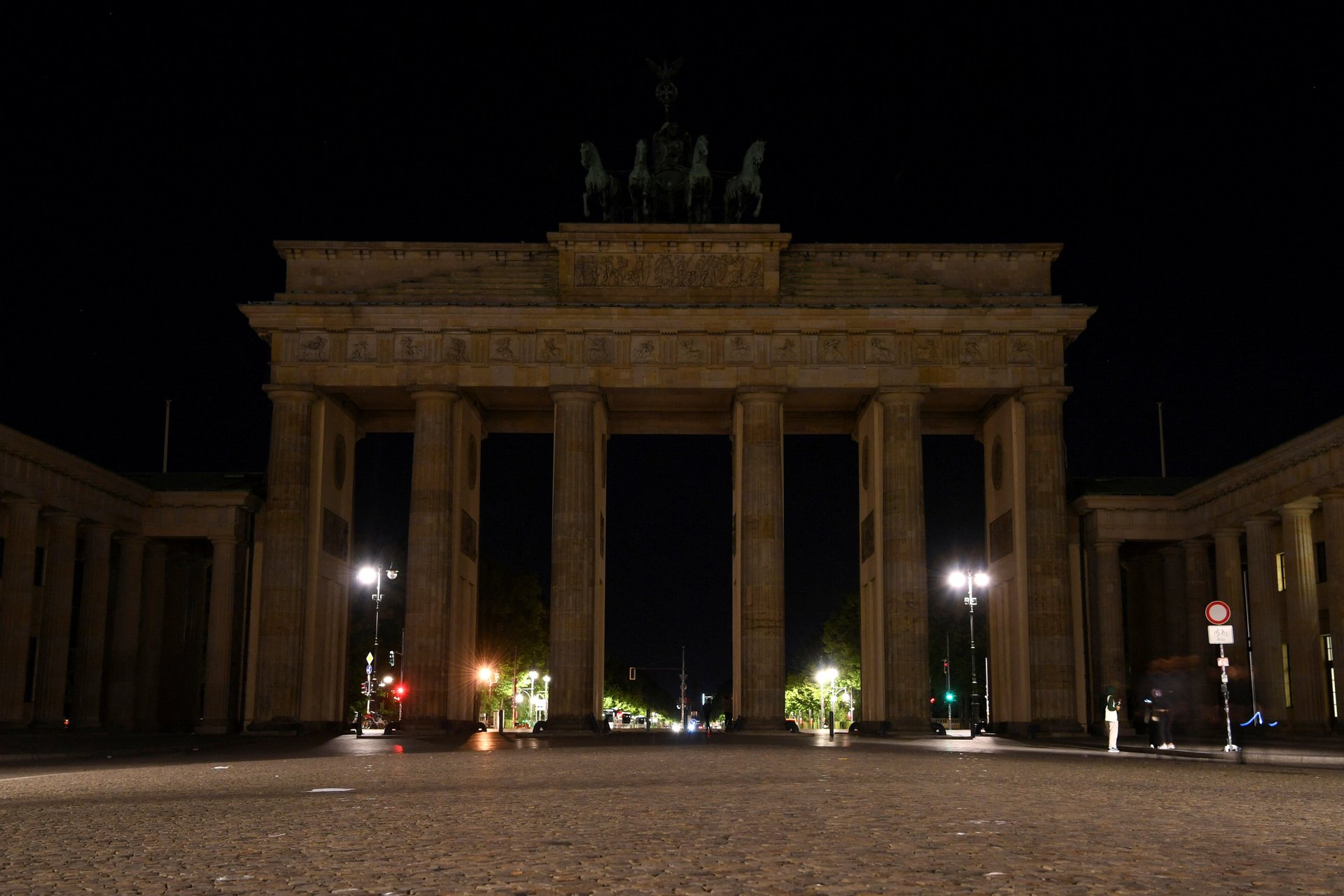Rich countries need to start switching off the lights at night
The rapid adoption of LED lighting has led to a false sense of complacency.

Europe’s unprecedented energy crisis will likely escalate as temperatures fall in the winter, so officials are scrambling to conserve as much natural gas as possible. They’re implementing or considering a host of emergency measures, including price caps on Russian gas imports, windfall taxes on energy companies, and mandatory consumption cuts for large industrial users.
Some companies and governments are also enforcing a step that should have long been a no-brainer: Turning off lights when they’re not in use.
In Berlin, at least 200 monuments and public buildings are no longer illuminated at night. SPAR and other supermarket chains are dimming their lights and reducing their open hours. Deutsche Bank and other financial institutions, in the interest of preserving electricity for essential computer networks, are turning off lights interior lights as well as outdoor lighting after hours. Deutsche Bank expects its measures to save the electricity equivalent of turning off 49,000 lightbulbs for an hour.
The gas crunch is forcing companies to think about their energy use
Overall, the energy crisis is forcing a reckoning of how much energy and money are wasted—and carbon emissions generated—with unnecessary lighting and other kinds of power use. That habit is ingrained in poorer countries, where people and companies keep close tabs on their electricity bills. But it is long overdue for wealthy countries that have been accustomed to keeping office and street lights on all night. Until recently, Deutsche Bank even left a fountain running through the night in front of its Frankfurt headquarters.
Globally, the share of electricity that goes to lighting has fallen in the last decade from about 20% to 13%, said Georges Zissis, a physicist at the University of Toulouse who studies the economics of lighting. That’s almost entirely due to the rapid adoption of energy-efficient LED lighting, which rose from less than 1% of global light sources in 2010 to about half now, on track to reach nearly 90% by 2030.
Even with the spread of LEDs, lighting today is responsible for about as much carbon emissions in one year as 248 million cars.
How much energy does urban lighting waste?
It’s hard to pin down exactly how much of that lighting is squandered, Zissis said. But it’s likely quite a lot; Zissis estimates that in the case of the average street light, if it switched on only when someone was underneath, it might use 95% less energy. The biggest culprits are office and commercial buildings, which in a typical European city use about half of lighting-related energy. The best long-term solution, Zissis said, is the installation of smart lighting systems that automatically detect when it’s dark outside and someone is in the room, and turn on only then.
The power savings brought about by LEDs are due for a reversal, Zissis said, because those efficiency gains lull users into a false sense of complacency, inducing them to leave lights on when they’re not in use. This is especially problematic in rich countries, since lighting accounts for a relatively smaller share of total energy use than in poorer countries, where fewer air conditioners or other appliances are in use. In France, for example, lighting accounts for about 12% of energy use; in Tanzania it’s up to 86%. That means the marginal difference in a household or business’s electric bill when lighting is conserved is much more noticeable.
In a crisis of the kind Europe is experiencing now, with electric bills shooting through the roof, wasted light is becoming much more financially painful. That, and a threat of a cold, grim winter, should be incentive enough to let the urban nights grow a little darker.
